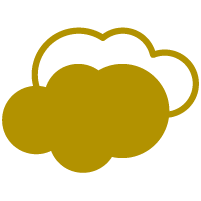Our current exhibition ‘Dina Razin: Reclaiming the Muse’ is proving very popular with visitors. It features 20 illustrations which Dina was commissioned to create for ‘Muse’, a book by Ruth Millington exploring the lives of artists’ muses.
Our Curator Henrietta talked to the author Ruth Millington to find out more about the book, and why Ruth chose Winterbourne as a venue for this exciting exhibition.
Henrietta: As you see it, what is a ‘muse’?
Ruth: To put it simply, a muse is a source of inspiration. It might be their creativity, intellect, personality, politics or achievements which inspire an artist to create work, often using this muse as their subject, although not necessarily. A muse doesn’t have to be a model. They could influence an artist in other ways, too, including their style as we find in the relationship between Emilie Flöge and Gustave Klimt – Flöge’s dress designs can be found in his portraits of high-society women.

Henrietta: Was there a particular ‘muse’ who inspired you to start exploring this topic?
Ruth: It was the story of Elizabeth Siddal who first sparked my interest in the subject. She is synonymous with the tragic heroine, Ophelia, having posed for Millais’ painting of this character, lying in her watery grave. To represent the drowning character, Siddal lay, during winter, in a bathtub full of water for five hours. Becoming very ill with pneumonia, she almost died, and never fully recovered. Many accounts present Siddal as a doomed damsel, plucked from obscurity to become a Pre-Raphaelite muse.
But, in truth, she wanted to partner with these painters as a means of infiltrating the male-dominated art world. In 1850s Britain, women were rarely allowed to exhibit publicly and barred from life drawing classes – unless they were the model! Accepted into their ranks, Siddal began to show her own work – she exhibited paintings and drawings alongside the male Pre-Raphaelites. It became clear to me that Siddal had become a muse as the means through which she could join her male counterparts, using it as an opportunity. She also brought creativity to this position, with the Pre-Raphaelite Brotherhood relying on her, as well as many other personal muses.

Henrietta: Once you started your research, how did you go about choosing which muses to include in the book?
Ruth: Art history has been defined by its muses, so there was a longlist of 60 at one point! Many muses I would have loved to write about didn’t make it into the text: Alice Prin, Josephine Fauriaux, Miss La La, Eugène Manet and more. But working with my editor, Mireille Harper, we decided on 30 whose stories showed the role of the muse in a unique light. It was also essential that there were diverse muses represented across race, gender, sex and sexuality. The aim of the book was to reclaim the term from stereotypes and celebrate a far more diverse cast of muses, which I hope our selection achieves.

Henrietta: What was the most surprising fact you discovered?
Ruth: I discovered that a famous quote has been attributed to the wrong person! “I am my own muse. I am the subject I know best. The subject I want to better.” This quote has been widely misattributed to the Mexican artist Frida Kahlo. It has been posted across the internet alongside paintings by her, printed on merchandise, and woven into the constructed and commodified Kahlo brand. But these words are actually from a deeply personal poem, written by artist and performer Oroma Elewa in 2011, who is seeking to reclaim her work.
Henreitta: What’s it been like working with Dina?
Ruth: It has been a dream come true to collaborate with Dina Razin, who breathed life into the muses of this book with her sublime and inspiring illustrations, including the beautiful cover. Each week, I would send Dina some key facts about the next muse for her to work on, and she would then ask me further questions and share ideas for her artwork, including preliminary sketches. We spoke every day for a year as we lived in the worlds of these muses, whose stories we have loved telling together. I couldn’t have made Muse without Dina.

Henrietta: What made you approach Winterbourne with the idea of an exhibition of Dina’s illustrations?
Ruth: When I held the book for the first time, and looked at Dina’s artworks bound together in its pages, I knew that she deserved an exhibition. Living in Birmingham, I knew of various galleries that could house a show, but I immediately thought that Winterbourne would be the ideal space. An Arts and Crafts house, with its own feminist art history, there are real synergies with the female muses’ stories. Moreover, as a Syrian/Iraqi artist, Dina is inspired by her Middle Eastern heritage and by the natural world, which is again reflected in the gardens and botanical illustrations which belong to Winterbourne. I was so happy when we agreed the show, which really does elevate the muse inside a beautifully decorated, domestic setting.

Henrietta: Lastly, Ruth, what are you working on next?
Ruth: I have just handed in the manuscript for a children’s art book!
Next month, look out for an interview with the artist herself, Dina Razin.
Looking for the ideal Christmas present for a friend who loves art? Or for some great bedtime reading for yourself? Ruth Millington’s book ‘Muse’ is available from the Winterbourne Gift Shop for £14.99.

 22°C
22°C